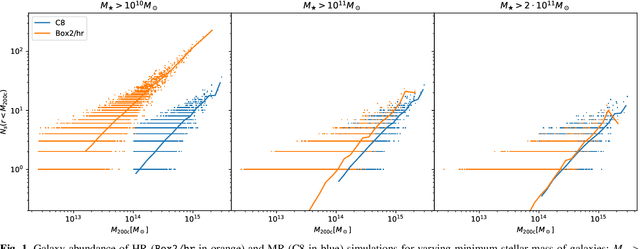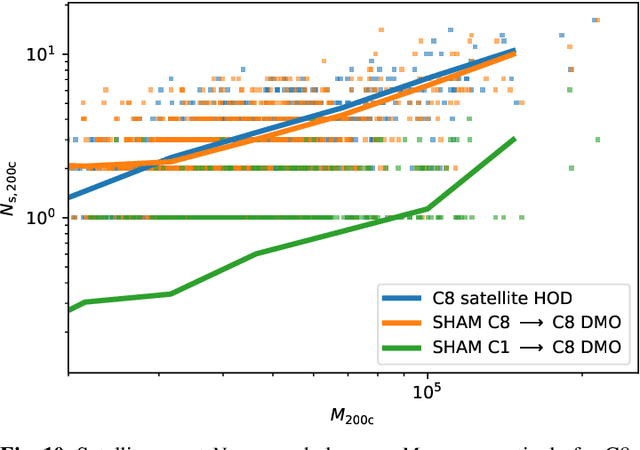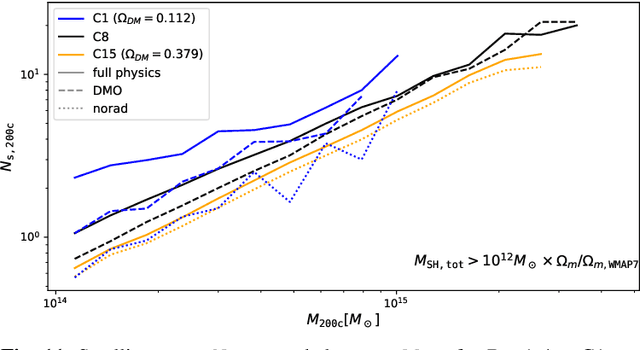Satellite galaxy abundance dependency on cosmology in Magneticum simulations
Paper and Code
Oct 11, 2021



Context: Modelling satellite galaxy abundance $N_s$ in Galaxy Clusters (GCs) is a key element in modelling the Halo Occupation Distribution (HOD), which itself is a powerful tool to connect observational studies with numerical simulations. Aims: To study the impact of cosmological parameters on satellite abundance both in cosmological simulations and in mock observations. Methods: We build an emulator (HODEmu, \url{https://github.com/aragagnin/HODEmu/}) of satellite abundance based on cosmological parameters $\Omega_m, \Omega_b, \sigma_8, h_0$ and redshift $z.$ We train our emulator using \magneticum hydrodynamic simulations that span 15 different cosmologies, each over $4$ redshift slices between $0<z<0.5,$ and for each setup we fit normalisation $A$, log-slope $\beta$ and Gaussian fractional-scatter $\sigma$ of the $N_s-M$ relation. The emulator is based on multi-variate output Gaussian Process Regression (GPR). Results: We find that $A$ and $\beta$ depend on cosmological parameters, even if weakly, especially on $\Omega_m,$ $\Omega_b.$ This dependency can explain some discrepancies found in literature between satellite HOD of different cosmological simulations (Magneticum, Illustris, BAHAMAS). We also show that satellite abundance cosmology dependency differs between full-physics (FP) simulations, dark-matter only (DMO), and non-radiative simulations. Conclusions: This work provides a preliminary calibration of the cosmological dependency of the satellite abundance of high mass halos, and we showed that modelling HOD with cosmological parameters is necessary to interpret satellite abundance, and we showed the importance of using FP simulations in modelling this dependency.
 Add to Chrome
Add to Chrome Add to Firefox
Add to Firefox Add to Edge
Add to Edge